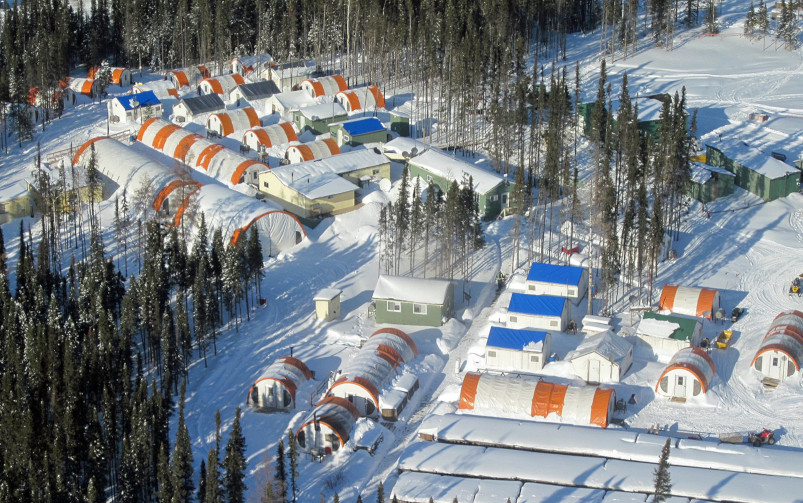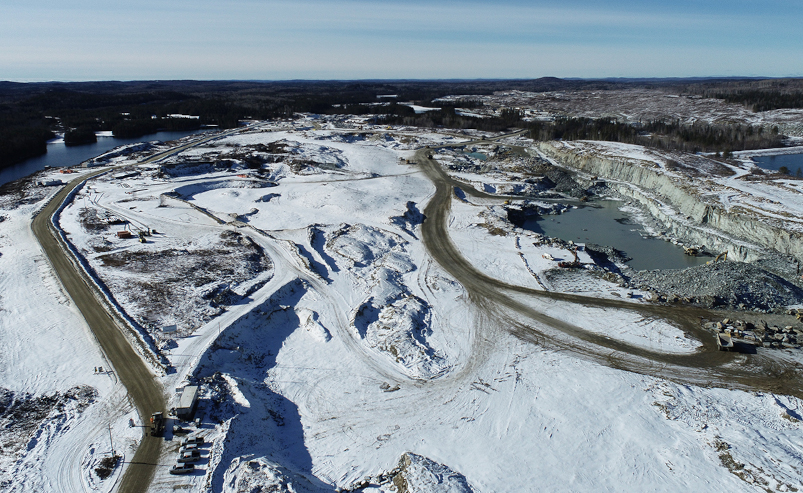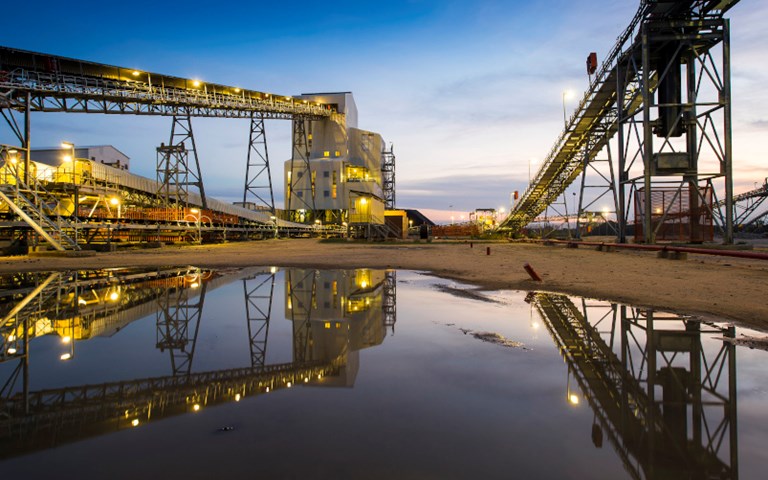Lucara's underground expansion for its Karowe diamond mine is expected to extend its mine life by 20 years. Courtesy of Lucara Diamond.
Welcome back to your weekly mining news recap, where we catch you up on some of the news you may have missed. This week’s headlines include a new outlook for Orvana’s El Valle mine, new research into cheaper hydrogen production and potential safety regulation changes for surface mines in the U.S.
Orvana Minerals’ desire to mine high-grade oxide ore transformed its El Valle gold-copper operations in Spain. The company changed its mining process – training a new in-house workforce, bringing in new equipment and changing mining procedures – upgraded its processing plant and is looking towards implementing renewable energy at the mine. The company recently restarted production at its processing plant, which had been on care and maintenance since Aug. 16.
Lucara Diamond has approved a US$514 million underground expansion to its Karowe mine in Botswana, extending the operation’s life an additional 20 years. The expansion was approved following the close of a US$220 million project financing debt package announced in July, of which US$170 million will be used to fund the expansion and US$50 million will be used to re-finance the company’s existing debt. The remaining portion of the capital costs will be met using projected cash generated from the mine and equity financing totalling $41.4 million.
A new report from the Conference Board of Canada has found that in 2017, non-resident workers in Nunavut took home nearly 30 per cent of the total earnings made in the territory that year, as reported by Nunatsiaq News. This is a sharp increase from 2008, where non-residents made only 17 per cent of the earnings. Nunavut has the largest share of non-resident workers employed in mining, according to the report, with 78 per cent of mine workers and 51 per cent of construction workers living outside the territory.
A junior exploration company has found itself in the crossfire of a dispute between Ontario and the Ginoogaming First Nation, as reported by TB News Watch. Quarternary Mining & Exploration holds mineral claims for part of the Wiisinin Zaahgi’igan, an area that the Ginoogaming consider a sacred part of its traditional territory. A Superior Court judge extended an injunction against mineral exploration in the area, ordering Ontario to engage in meaningful consultation with the First Nation before returning to court in six months, a decision that leaves Quarternary’s claims “up in the air.”
Mining waste could become a cheap catalyst for hydrogen fuel production, according to a study from researchers at the Queensland University of Technology and the University of Queensland, as reported by Phys.org. Materials present in mine waste – such as platinum, cobalt and nickel – combined with feldspars, created a water-splitting reaction, generating hydrogen. According to the researchers, cobalt-coated feldspar was the most efficient and could potentially lower the cost of lithium-ion batteries and other energies relying on electrochemical conversions.
Canada’s largest mining show, PDAC, will be making its return in 2022 as a combination in-person and virtual event, as reported by Northern Ontario Business. The in-person event will run from Mar. 7 to 9 in Toronto, with the online event following on Mar. 10 to 11. The Mining Engagement Conference for Advancement (MECA) also announced its return in October, reported Sudbury.com, though it will take place exclusively online.
A report from the World Nuclear Association predicts global nuclear-generation capacity to grow by 2.6 per cent each year, reaching 615 gigawatt electrical by 2040, as reported by World Nuclear News. A currently depressed uranium market has seen production drop significantly, and the report warns that to meet the coming demand, the industry will need to at least double its development pipeline of new projects. However, other methods, such as enrichment and fuel fabrication, will also help to meet the demand.
The U.S. Department of Labor’s Mine Safety and Health Administration (MSHA) is proposing a rule to require mine operators to develop a written safety program for haulage equipment at surface mines and surface areas of underground mines, as reported by International Mining. While the rule is designed to help prevent accidents involving mobile and powered haulage equipment, feedback on the rule suggested that specific hazards can vary at different operations and that further review needs to be made by MSHA before any regulations are put in place.
Under a new framework agreed to by the G20 economies, the African nation of Chad is looking to negotiate with Glencore on restructuring the country’s commercial debt, as reported by Reuters. The country’s commercial debt is more than 98 per cent concentrated in an oil-backed loan from Glencore, and the country is therefore reliant on the company to solve its cash flow problem. Authorities have met with Glencore four times to discuss a restructuring deal and are awaiting the company’s decision.
A study released by researchers at McGill university and the University of Copenhagen has found that the human and environmental costs of sand and gravel mining in lower- and middle-income countries has been overlooked, as reported by Mining.com. The report states that increasing demand and unregulated sand mining in 70 countries across the globe has led to ecological and labour rights conflicts. The researchers also suggest, however, that if carefully managed, sand and gravel mining can provide opportunities to help eliminate poverty in these countries and meet global sustainable development goals.
That’s all for this week! If you’ve got feedback, you can always reach us at editor@cim.org. If you’ve got something to add, why not join the conversation on our Facebook, Twitter, LinkedIn or Instagram pages?




